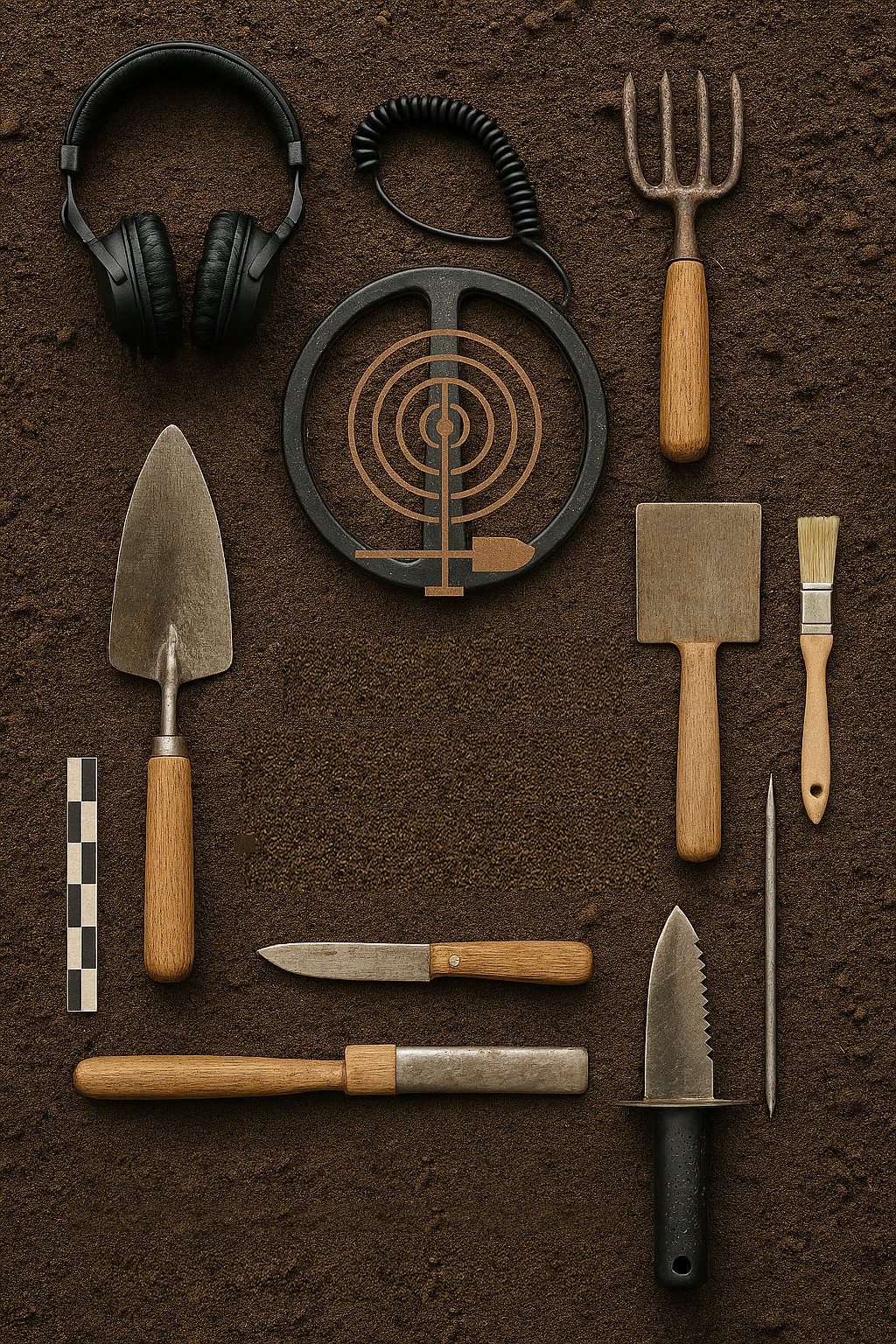© Copyright Reserved - United Kingdom
Ideal Screen Composition 1024 x 768
9
10
Chapter 2: Tools of the Trade
This choreography is not fixed, it evolves with trust, training and shared purpose. The tools may differ, but the ethic must align: discovery without disruption, memory without misappropriation.
Chapter 3: Ethics of the Unearthed
Every unearthed object carries a story, but also a burden. Once removed from the soil, it is no longer silent. It demands interpretation, care and accountability. Whether a Roman brooch, a medieval coin, or a rusted musket ball, the artefact becomes a question: Who will speak for me now?
Ownership vs. Custodianship
In many jurisdictions, the finder of an artefact may legally own it. But legality is not the same as ethics. Custodianship asks a deeper question: Am I the right person to hold this?
Ownership implies possession.
Custodianship implies care, context, and contribution. The Portable Antiquities Scheme (PAS) in the UK offers a model: finds are voluntarily reported, documented and sometimes acquired for public collections. It’s not perfect, but it’s a ritual of accountability.
Context is Everything
An artefact without context is a fragment without meaning.
A coin found in isolation may tell us little.
A coin found in a burial site, alongside pottery and bone, may rewrite history. Detectorists must learn to recognise context; not just the object, but its surroundings, depth and relational clues. Reporting is not just about the item, it’s about the story it was part of.




